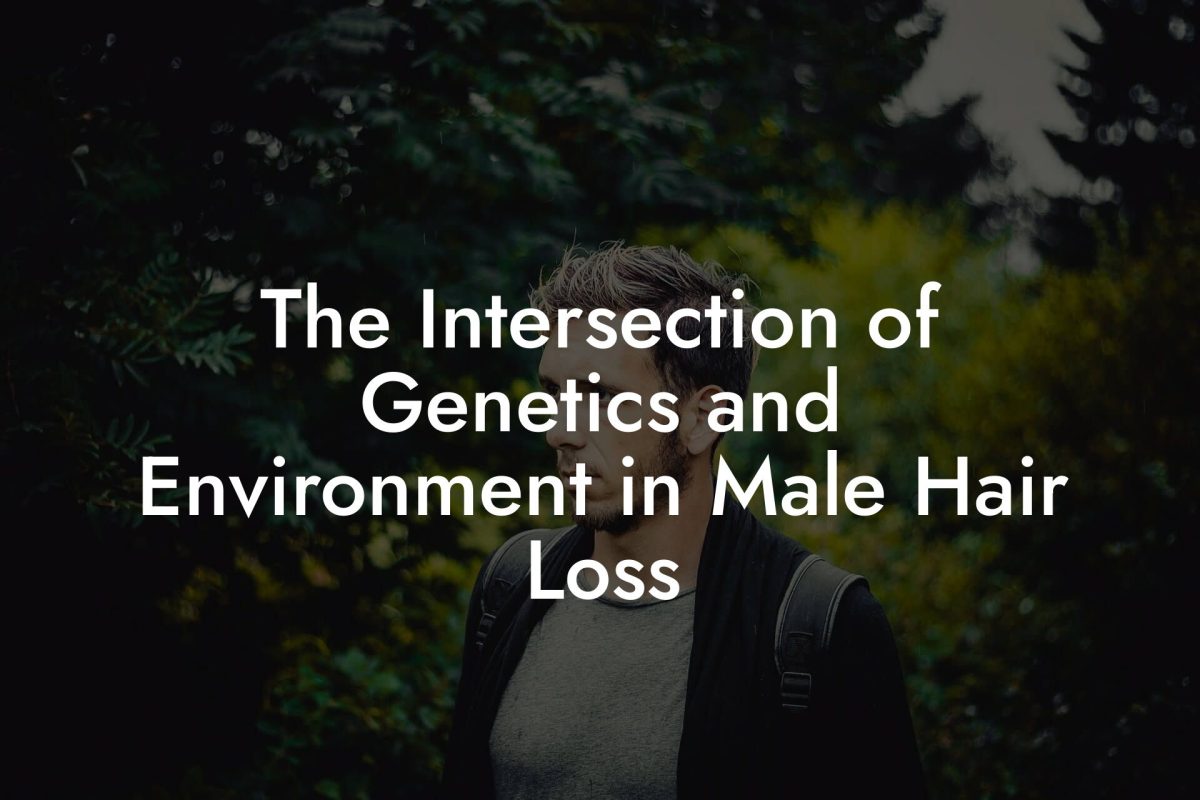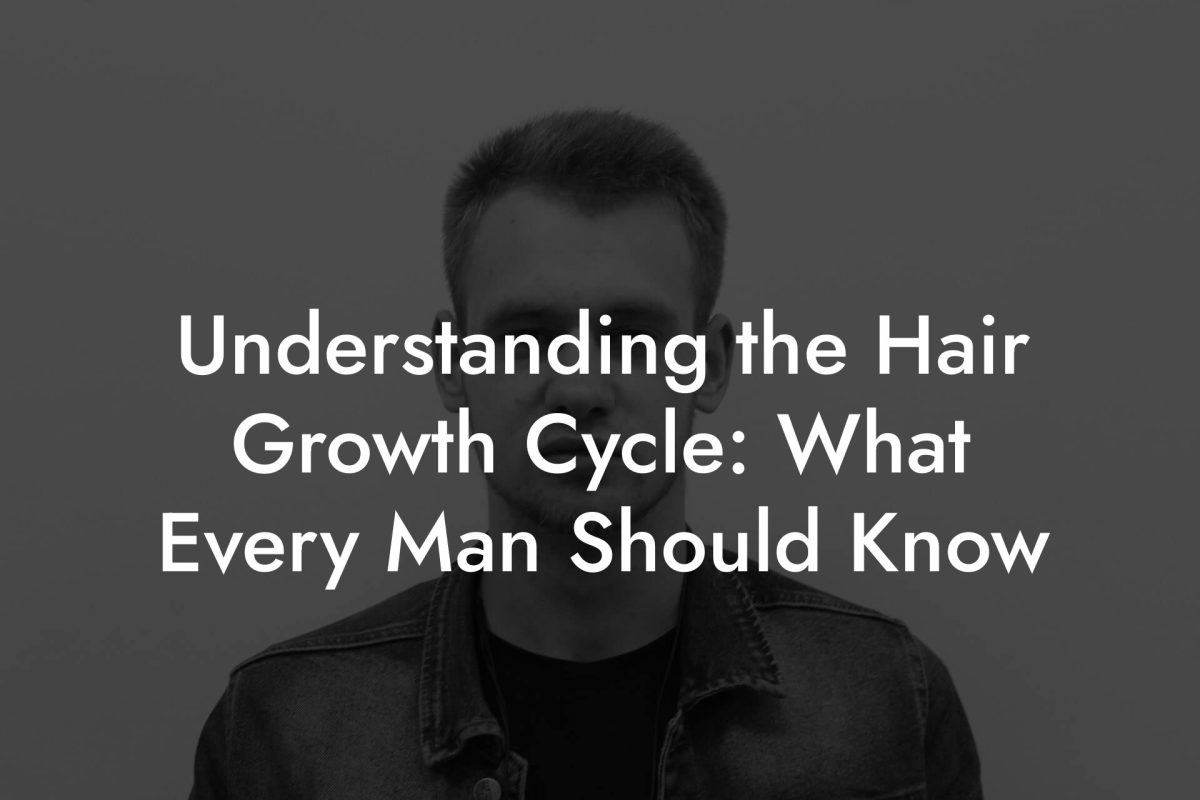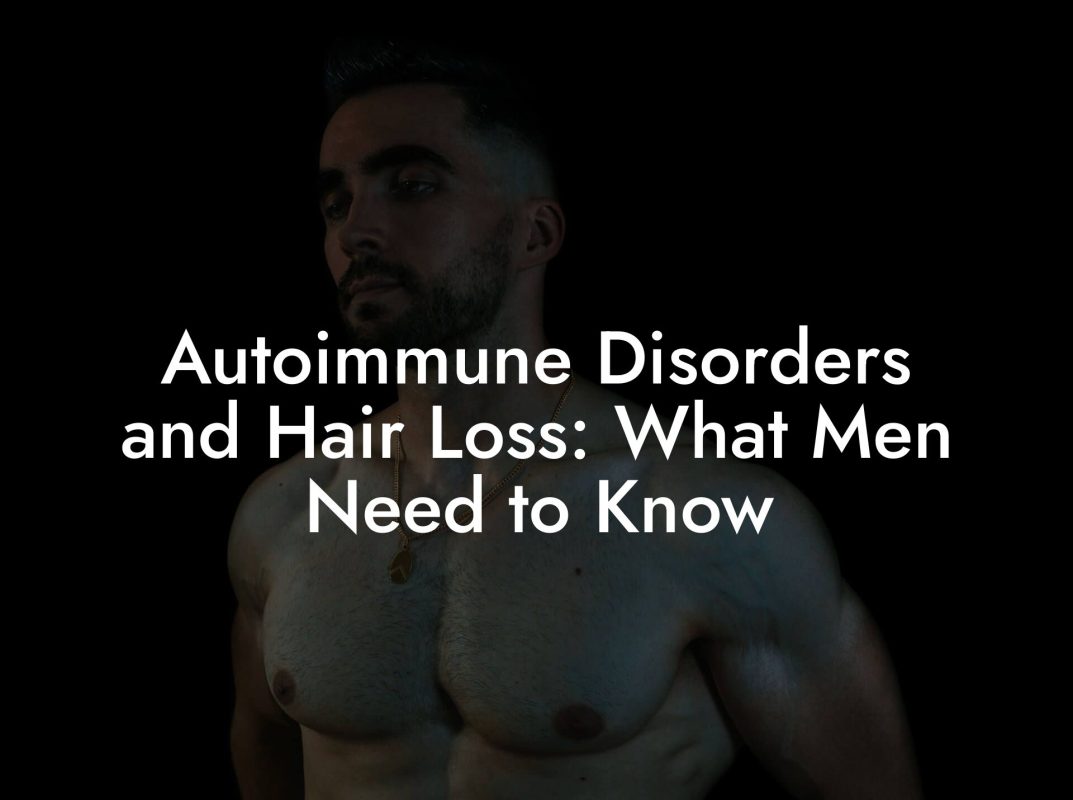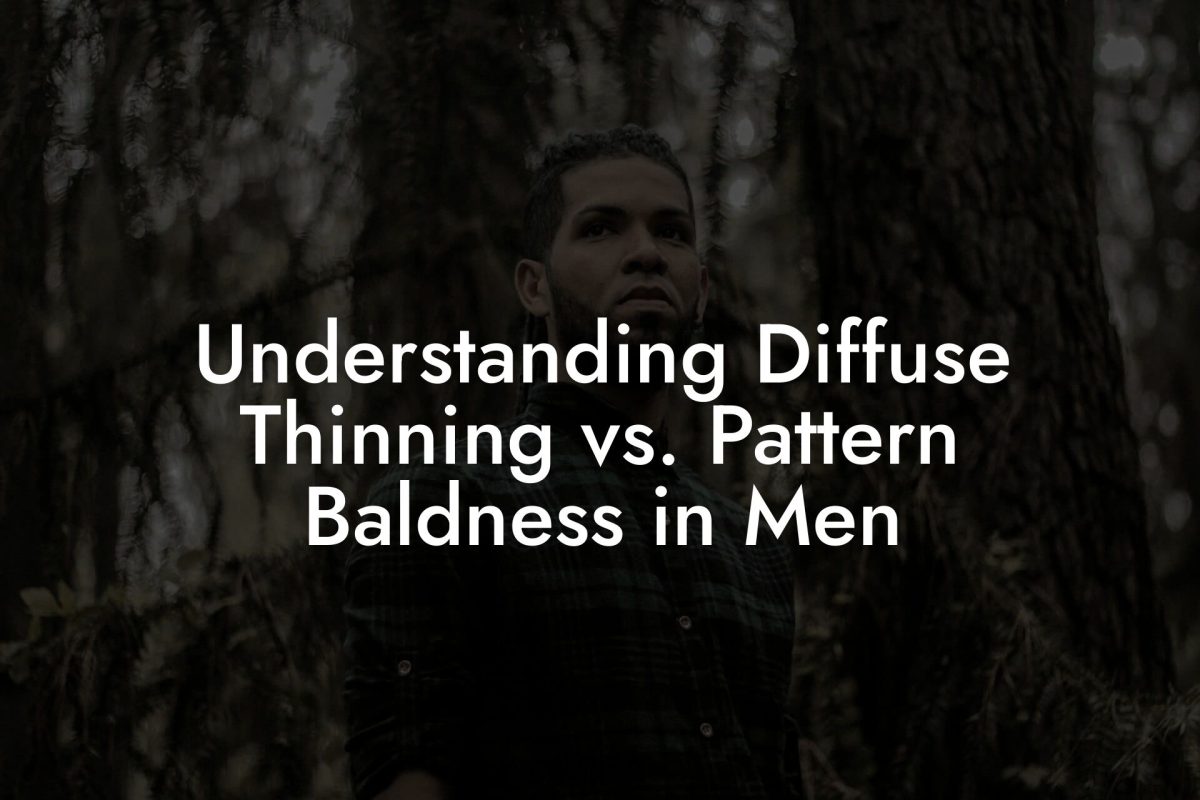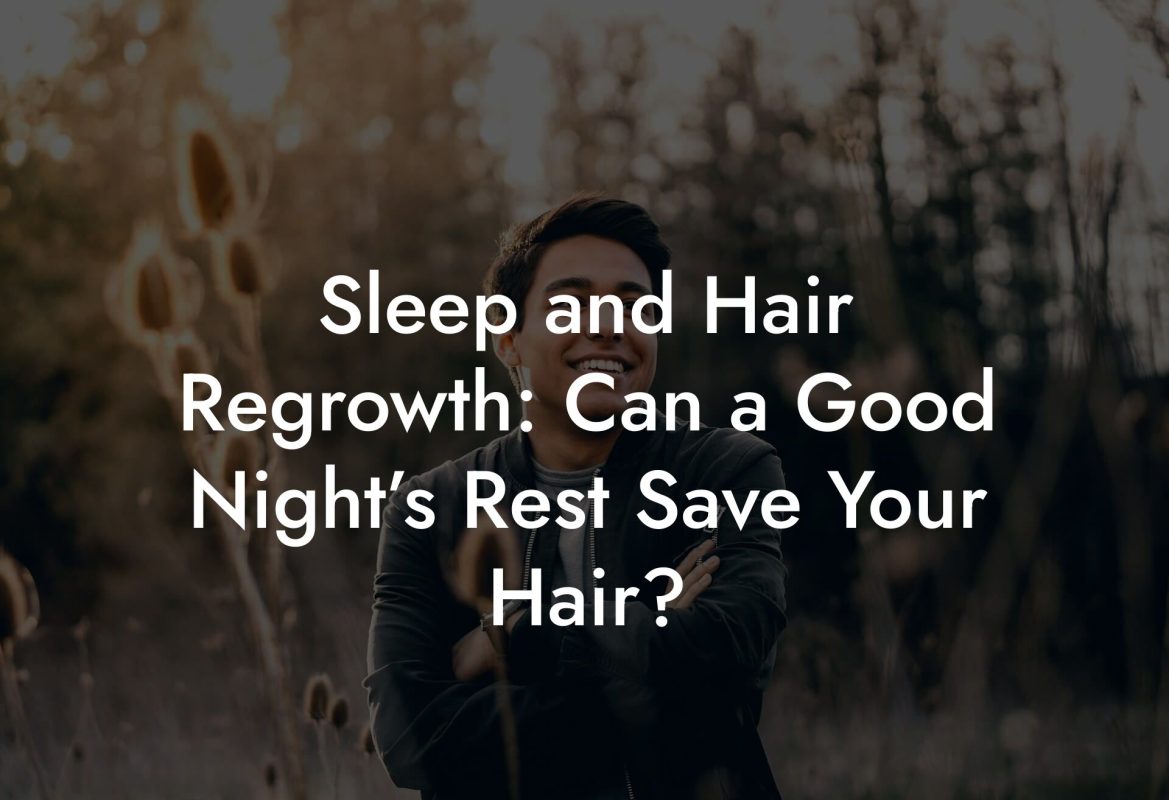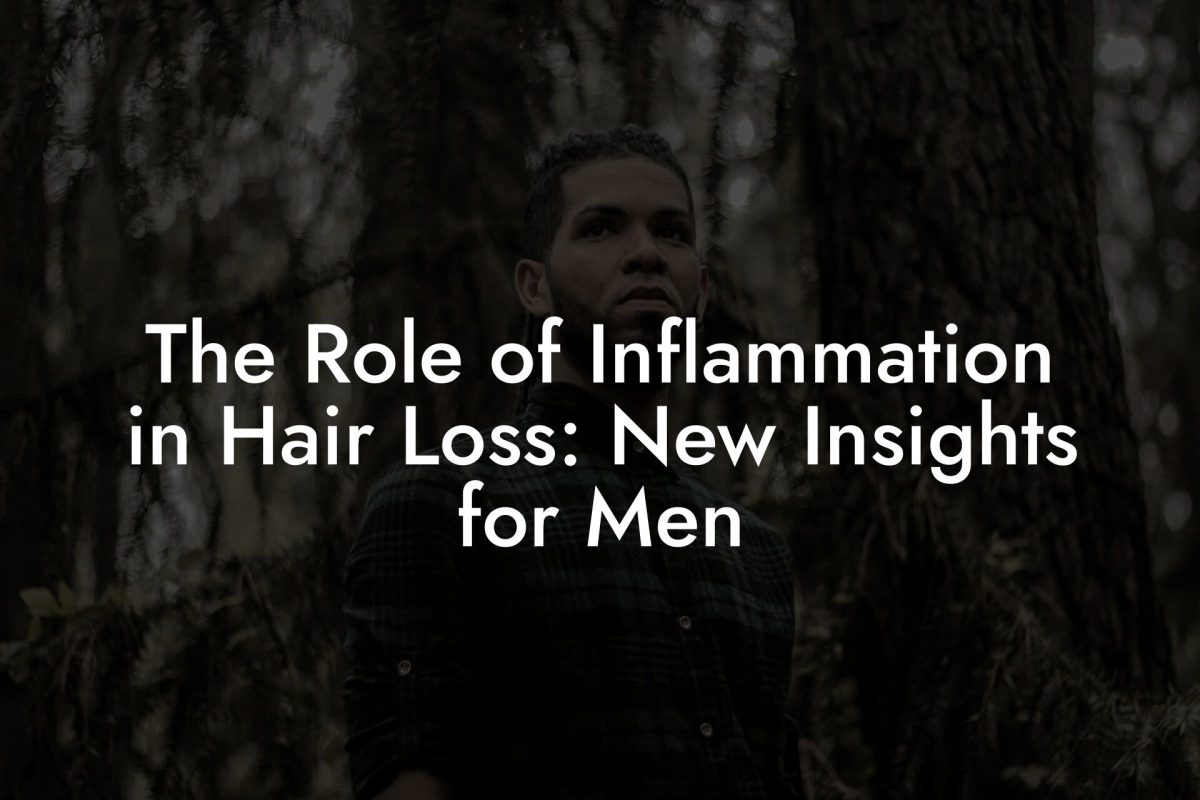Hair Loss Library
When to Worry: Recognizing Abnormal Hair Loss Patterns in Men

When you notice more strands of hair on your pillow than you used to, it might be tempting to blame everything from stress to extraterrestrial experiments. But before you start Googling “bald by 30” and stockpiling hats, let’s break down what’s normal and what might be a red flag. At Mane Matrix, we get that hair loss in men isn’t always a cut-and-dry case of receding hairlines and thinning crowns—it can sometimes be a sign that something else is going on. This guide will walk you through the ins and outs of abnormal hair loss patterns, delivered with the kind of humor and real talk that resonates with millennials and Gen Z alike.
The Basics of Hair Growth: Understanding the Natural Cycle
Before we jump into when to worry, let’s set the stage with a quick rundown of how your hair actually grows (or seems to fall out). Hair growth is a cyclical process that typically involves three phases: the anagen (growth phase), catagen (transition phase), and telogen (resting phase). A healthy scalp constantly cycles through these stages—about 85-90% of your hair is in the growing phase during your early 20s. But as you age, this balance shifts, and a few extra hairs might take a permanent vacation.
It’s normal to lose anywhere from 50 to 100 hairs a day, thanks to this natural shedding process. However, when your hair loss exceeds this number and clumps together in unexpected ways, it could signal that something out of the ordinary is happening. And sometimes, your scalp’s performance may be more dramatic than your last binge-watch session.
So, what’s the deal with abnormal hair loss? In simple terms, it’s when your hair shedding process goes haywire—whether because of hormonal shifts, genetics, or even lifestyle factors. Recognizing these signs early can help you take action before your hairline stages its own disappearing act.
Normal vs. Abnormal: Decoding What’s “Too Much” Hair Loss
Let’s break it down: if you’re noticing a few extra strands in the shower, it’s likely nothing to worry about. But if you’re waking up to find clumps of hair clogging your brush or spots on your scalp that look like they were dusted with confetti, it’s time to pay attention. Here are some common factors that tip the scale from normal to abnormal:
- Excessive Shedding: Losing significantly more than the standard 50-100 hairs a day.
- Patchy Bald Spots: Areas where hair stops growing altogether, often in round or oval shapes.
- Rapid Thinning: A noticeable thinning of the hair within a short period, rather than the gradual process you’d expect from aging.
- Hair Breakage: Not just falling out but breaking off before it even grows out fully.
- Scalp Issues: Accompanying symptoms like itching, redness, or inflammation that might hint at an underlying condition.
When it comes to hair loss, context is key. For instance, hormonal changes related to stress, diet, or illness can temporarily boost your shedding rate, which usually eases once your system is back in balance. But if the problem persists, it may be time to investigate a bit deeper.
Key Warning Signs: When to REALLY Start Worrying
Not all hair loss is created equal. Some patterns are just part of getting older or dealing with genetic predispositions, while others might be calling for a closer look. Here’s a checklist to help you figure out if it’s time to consult a pro:
- Sudden Onset: A rapid increase in hair loss over a few weeks or months rather than a slow, gradual thinning.
- Patchy Loss: Discrete areas where hair growth is noticeably absent, rather than uniform thinning across the scalp.
- Associated Symptoms: Signs like scalp pain, severe itching, or burns might indicate infections or autoimmune conditions.
- Family History: While genetics play a huge role, a drastic deviation from the family pattern could suggest an additional factor is at play.
- Excessive Breakage: Hair that seems to snap easily or break off even after gentle brushing.
If any of these signs have you reaching for your phone to consult a search engine, it might be time to talk to a hair loss specialist—even if you’re not ready to face the idea of yet another embarrassing appointment.
Common Patterns of Hair Loss in Men: More Than Just a Receding Hairline
When it comes to hair loss, men can experience a variety of patterns, each with its own set of clues. Understanding these patterns can empower you to detect abnormal changes before they take center stage.
Androgenetic Alopecia (Male Pattern Baldness)
This is the poster child for male hair loss. Androgenetic alopecia is genetically driven and typically results in a receding hairline and thinning at the crown. Over time, this pattern can progress to complete baldness at the top, while often sparing the sides of the head. Although it’s common and usually predictable, rapid progression or severe thinning might indicate that something more aggressive is at work.
Alopecia Areata
Alopecia areata is an autoimmune disorder where the body basically attacks its own hair follicles, leading to sudden, patchy hair loss. The patches can appear on the scalp, beard, or any other hair-bearing area. While some men experience spontaneous regrowth, others might see the hair loss remain or even expand to complete alopecia totalis.
Telogen Effluvium
Imagine your hair follicles deciding to take an unexpected vacation all at once—that’s telogen effluvium. Triggered by factors like severe stress, illness, or major life events, this type of hair loss leads to diffuse thinning across the scalp. It’s usually temporary, but if the triggers persist, the shedding might stick around longer than you’d like.
Traction Alopecia
This type is often the result of hairstyles that pull on the hair, such as tight ponytails or braids. While more common in women, men who favor certain grooming styles can also experience this form of hair loss. The good news? It’s often reversible once you ease up on those tension-inducing styles.
Recognizing these patterns is the first step in determining whether your hair loss is simply following a genetic script or if it's veering into abnormal territory. And remember, knowledge is power—even if it’s powered by the occasional bad hair day.
Digging Deeper: Diagnosing Abnormal Hair Loss
So, you’re noticing more hair in your brush, and it looks like your scalp is auditioning for a role in a horror movie. What now? The first step is understanding what’s behind the scene. Diagnosing abnormal hair loss often involves a mix of self-examination, professional evaluation, and sometimes a bit of detective work.
Self-Assessment and Observation
Begin by taking stock of your hair loss. Document the date, the areas where you notice thinning or patchiness, and any associated symptoms like itching or pain. Snap a few “before” pictures—you never know when you might need to compare progress over time.
Consider any recent changes in your life: Have you been under a lot of stress? Altered your diet? Started a new medication? Even things like drastic weather changes can impact your scalp’s performance. This self-assessment will give you some context and help a professional zero in on the likely causes.
Professional Diagnosis: What to Expect
If your self-monitoring raises more than a few red flags, it might be time to call in an expert. A dermatologist or trichologist (that’s a hair specialist, not a magician) will typically perform a scalp examination, check your medical history, and may even use a dermoscope to get a closer look at your follicles.
In some cases, a biopsy or blood tests might be recommended to rule out underlying conditions such as thyroid issues or autoimmune disorders. The key here is that a comprehensive evaluation can pinpoint whether your hair loss is simply part of your genetic blueprint or a sign that further intervention is needed.
Understanding Diagnostic Tools
Modern technology has made it easier than ever to get an accurate diagnosis. Tools like phototrichograms, scalp surface analysis, and even smartphone apps can help track changes over time. While these technologies might sound intimidating, they’re just more evidence that your hair is trying to tell you something—sometimes yes, hair really does have a story.
What’s Behind the Falling Leaves? The Many Causes of Abnormal Hair Loss
Hair loss in men isn’t caused by a single villain—it’s usually a complex mix of factors. Let’s unravel the mystery behind some less obvious culprits:
Genetics and Hormones
If your dad went bald by age 35, the odds are that you might too. Androgenetic alopecia is largely driven by genetics and hormones, especially dihydrotestosterone (DHT). DHT shrinks hair follicles, leading to thinning over time. While this process is true for many men, an abnormal rate or pattern of loss could suggest that other factors are compounding the damage.
Stress and Emotional Factors
Stress is like that one roommate who never pays rent—it’s always there and always causing issues. High levels of stress can push hair follicles into the telogen (resting) phase prematurely, leading to telescoping bouts of shedding. Chronic anxiety, major life changes, or trauma can all trigger what’s known as telogen effluvium.
Nutritional Deficiencies
Ever heard the saying, “You are what you eat”? When it comes to hair, this rings particularly true. Iron, vitamin D, zinc, and other nutrients are critical to healthy hair growth. A deficiency in these areas can result in weakened hair shafts and slow regrowth, making your hair more prone to breakage and shedding.
Medical Conditions and Medications
Underlying medical conditions like thyroid disorders, autoimmune diseases, and certain skin conditions can wreak havoc on your hair. Additionally, medications ranging from blood thinners to antidepressants might have hair loss as a side effect. It’s essential to evaluate whether an abnormal hair loss pattern aligns with any other health changes in your life.
Environmental Factors
Pollution, hard water, and even overuse of hair products can create a hostile environment for your scalp. Chemicals and toxins in the environment can damage hair follicles or alter the natural balance of oils and moisture on your scalp, contributing to abnormal shedding.
When you look at the big picture, abnormal hair loss is rarely the work of a single culprit. More often, it’s a cocktail of genetics, lifestyle, environmental exposures, and sometimes just plain old bad luck. The key takeaway? Keep an eye on the details and don’t be afraid to dive deeper when something doesn’t add up.
The Lifestyle Connection: How Your Daily Choices Impact Hair Health
It turns out, your hair is a lot like a finely tuned instrument—it responds to the environment you feed it, both literally and figuratively. Your daily habits, from your diet to your stress levels, can have a profound impact on the health of your hair. Here’s how:
Diet and Nutrition
As mentioned earlier, what you eat plays a huge role in keeping your hair fertile ground for growth. Think of your body as a high-performance car; without premium fuel (nutrients like proteins, vitamins, and minerals), you’re running on empty. Foods rich in antioxidants, omega-3 fatty acids, and biotin are your best allies in keeping hair robust and resilient.
Exercise and Blood Circulation
A healthy heart means a healthy scalp. Regular exercise improves blood circulation, ensuring that your hair follicles get the oxygen and nutrients they need to thrive. So, next time you’re skipping leg day, remember that a brisk walk or a quick run might just do wonders for your hair.
Stress Management
We’ve all been there—those days when stress clings to you like static cling on a bad sweater. Whether it’s through meditation, exercise, or simply taking time to unplug, managing stress is essential for maintaining not just your mental health, but also your hair health. Lower stress levels mean that your hair follicles won’t be on high alert, ready to exit the growth phase prematurely.
Sleep and Recovery
In the world of hair care, sleep is like your nightly reset button. Quality sleep gives your body the chance to repair itself, including your scalp and hair follicles. Aim for consistent, quality rest to ensure your body is in prime condition for daily regeneration.
When your daily routines include smart food choices, regular physical activity, and time to relax, you create an environment where your hair can truly flourish. And that’s one less worry on your plate—and one less excuse to skip out on your morning workout.
Exploring Treatment Options: From Topical Solutions to Cutting-Edge Therapies
If you’ve been nodding along thinking, “Yeah, I’ve noticed something off about my hair lately,” you may be wondering what can be done. The good news is that the world of hair loss treatment is as diverse as your favorite playlist. Whether you’re leaning towards over-the-counter solutions or considering more advanced therapies, there are plenty of options available.
Over-the-Counter Treatments
The first stop on many men’s hair journey is over-the-counter shampoos, conditioners, and serums designed to strengthen hair and promote a healthy scalp. Products containing ingredients such as ketoconazole, biotin, or caffeine can help by reducing scalp inflammation and encouraging blood flow to the follicles.
Medications and Prescription Treatments
For those experiencing more significant hair loss, there are pharmaceutical options like minoxidil (Rogaine) and finasteride (Propecia) that have been shown to slow down or even reverse some hair loss patterns. Minoxidil works topically to stimulate hair follicles, while finasteride works systemically by reducing DHT levels. Just remember, these medications require commitment, and like with any treatment, there can be side effects worth discussing with a professional.
Innovative Procedures and Regenerative Therapies
The beauty world isn’t resting on its laurels—innovative procedures like platelet-rich plasma (PRP) therapy and low-level laser therapy (LLLT) are making waves in the fight against hair loss. PRP involves drawing a small amount of your blood, processing it for growth factors, and then injecting it into your scalp to promote regeneration. LLLT, on the other hand, uses targeted light to stimulate hair follicles and improve scalp circulation.
Surgical Options
And for those who want a more permanent solution, hair transplant surgery remains a robust option. Techniques like follicular unit extraction (FUE) have become less invasive and more effective over the years, offering natural-looking results without the need for an ongoing regimen—or, at least, not as much.
No matter which treatment path you choose, the secret is early intervention and staying informed about the latest developments. Your hair might be trying to tell you something, and with the right tools and professional guidance, you can steer your way back to confidence.
DIY Hair Care: Everyday Tips for the Modern Man
Alongside professional treatments, there’s a world of everyday practices you can adopt to show your hair some extra love. These DIY tips are designed for the busy modern man who wants to maintain a healthy mane without making his life feel like a 12-step program.
Scalp Massage: More Than Just a Relaxing Ritual
Give your scalp a little TLC with regular massages. Not only does this feel amazing after a long day, but it also boosts blood circulation—making those follicles work a little harder to keep your hair happy. A few minutes a day is all it takes to feel the benefits.
Choose the Right Products
Invest in quality, sulfate-free shampoos and conditioners that are designed for your hair type—whether you’re dealing with dryness, oiliness, or something in between. Look for products that include natural ingredients known to nourish and protect, like tea tree oil, rosemary, or argan oil.
Mind Your Styling Habits
We get it—everyone loves a good style experiment. But excessive heat from blow dryers, flat irons, or even vigorous towel drying can weaken your hair over time. Let your hair air dry whenever possible, and try to avoid hairstyles that put undue tension on your roots.
Keep Your Diet Hair-Friendly
Reinforcing the earlier discussion on nutrition, remember that what you eat greatly affects what you see on your head. Load up your plate with foods rich in protein and vitamins to give your follicles a fighting chance.
These self-care routines aren’t about chasing the mythical fountain of youth—they’re about optimizing the natural cycle, reducing unnecessary stress on your hair, and ultimately feeling more in control of your appearance.
Integrative and Holistic Approaches: Treating Hair Loss as a Whole-Body Issue
Picture your hair as a patient with its own set of needs—a delicate balance of nurture and care that’s influenced by everything from your diet to your stress levels. Embracing integrative and holistic approaches means treating hair loss as part of a larger picture. Rather than simply reaching for a bottle of shampoo labeled “anti-hair loss,” you consider the entire ecosystem of your health.
Think of it like tuning up a vintage car. You wouldn’t only care about the engine without checking the tires, oil, and even the alignment, right? Your hair deserves the same comprehensive care. This means exploring everything from mindful practices and nutritional support to exercise and natural remedies that target scalp health.
Mindfulness and Stress-Reduction Techniques
Stress is a notorious accomplice in the hair loss saga. Incorporating mindfulness practices such as meditation or deep breathing exercises can reduce cortisol levels, which in turn helps maintain a healthy hair growth cycle. Even just a few quiet minutes a day can have a surprisingly positive impact.
Nutritional Counseling and Supplements
Sometimes the secret weapon against hair loss is right on your plate. Nutritional counseling can help you identify deficiencies and incorporate foods rich in iron, vitamin D, zinc, and biotin—nutrients that fuel hair growth. Supplements might be recommended if your diet isn’t quite hitting the mark.
Alternative Therapies: Nature’s Contributions
Acupuncture, herbal remedies, and even low-level laser therapy aren’t just buzzwords—they’re practical approaches that target inflammation and promote blood flow to the scalp. While these therapies may not be a miracle cure on their own, when combined with conventional treatments, they create a synergistic effect that offers a holistic pathway towards healthier hair.
Integrating these holistic strategies into your daily routine isn’t about chasing an impossible ideal—it’s about embracing a balanced lifestyle that bolsters your overall well-being, which naturally reflects in your hair’s health.
Resources and Community Support: Your Next Steps
You’re not alone in the battle against abnormal hair loss. There’s a vast network of resources, experts, and supportive communities waiting to welcome you. At Mane Matrix, we believe that sharing stories, tips, and even a few laughs along the way can make all the difference.
Online Forums and Social Media: Join communities on platforms like Reddit, Facebook, or Instagram where guys discuss their journeys, share their progress, and offer mutual support. Sometimes, knowing that others are facing the same challenges can be a huge relief.
Professional Consultations: Even if you’re not ready for an in-person, expensive consultation, many experts now offer virtual appointments. These convenient options provide an opportunity for personalized advice without the awkward waiting room small talk.
Educational Content: Dive into blogs, webinars, and YouTube channels dedicated to men’s hair health. Staying informed about the latest breakthroughs in treatments and lifestyle approaches empowers you to make smarter choices.
Local Support Groups: Check out local community centers or health clinics that might offer sessions on stress reduction, nutrition, and overall wellness. Building bonds with others on a similar journey can be both motivational and emotionally uplifting.
Whether you’re looking for quick tips, long-term guidance, or just a place to vent about a bad hair day, these resources are there to help you chart a course toward better hair health and renewed confidence.
Real Stories: Navigating the Journey of Abnormal Hair Loss
Nothing makes the complexities of hair loss more relatable than real-life narratives. Here are a few stories from men who recognized abnormal patterns and took steps to turn things around:
A New Chapter After Sudden Hair Loss
Mark, a 29-year-old digital marketer, found himself suddenly facing a rapid thinning of hair that went beyond just a receding hairline. After months of stress at work and a less-than-stellar diet, he noticed clumps of hair in his morning shower. Instead of ignoring it, Mark tracked his progress with photos and consulted an online specialist. Through a combination of nutritional changes, mindful stress management, and targeted treatments, he slowly regained control over his hair health. His journey was filled with ups, downs, and plenty of humorous self-reflections on bad hair phases—but in the end, he came out more informed and confident.
From Frustration to Empowerment
Alex, a 35-year-old fitness coach, had always prided himself on his impeccable hair. But after noticing unexplained thinning and patchy loss, his confidence took a hit. Rather than searching for a quick fix, Alex decided to explore the root causes. By partnering with a specialist, he discovered that a combination of lifestyle stress and a minor nutritional deficiency was to blame. Feeling empowered with a targeted plan that included supplements, lifestyle adjustments, and time-tested therapies, Alex not only saw improvements in his hair density but learned to embrace his evolving look with humor and self-assurance.
Turning Setbacks into Wins
Then there’s Ryan, a 42-year-old entrepreneur who initially dismissed his diffuse hair loss as a natural part of aging—until it started affecting his self-esteem and professional image. With a proactive approach, Ryan dove into the latest research, experimented with various treatments, and finally zeroed in on a balanced regimen tailored to his unique needs. Today, he not only documents his progress on social media but has become a vocal advocate for early intervention and holistic hair care.
These stories are a testament to the fact that abnormal hair loss isn’t the end of the road—it can be the start of a journey towards reclamation, innovation, and a renewed sense of self.
Your Personalized Action Plan: Steps to Take When You Notice Abnormal Hair Loss
If you’re reading this and feeling a bit perplexed or even concerned, here are some actionable steps to help you navigate the situation:
Step 1: Monitor and Document
Start by keeping a hair diary. Take regular photos, note the frequency and volume of your shedding, and note any accompanying symptoms. This information will be valuable whether you’re making lifestyle adjustments or consulting a professional.
Step 2: Review Your Lifestyle
Evaluate your daily habits—are you eating enough protein? Are you managing stress effectively? Sometimes, small tweaks like incorporating a nutrient-dense breakfast or a short meditation session can have a big impact on your hair’s health.
Step 3: Explore Professional Advice
If your self-monitoring reveals a more significant pattern of hair loss, consider reaching out to a hair loss specialist for a professional evaluation. With options for virtual consultations widely available, expert advice is only a few clicks away.
Step 4: Experiment with Treatments
Experimentation is key. Start with over-the-counter solutions that promote scalp health, consider adding supplements if needed, and research innovative therapies like low-level laser treatment or PRP if the loss seems aggressive. Remember, consistency is vital—results take time.
Step 5: Engage with a Community
Join online groups and support networks where you can share experiences and get advice from others who have been there. Sometimes, a little community support can turn confusion into clarity.
By following these steps, you set in motion a proactive approach to your hair health. Taking control today can make all the difference tomorrow—your hair journey is a marathon, not a sprint.
Frequently Asked Questions About Abnormal Hair Loss in Men
We’ve gathered some of the most common questions related to abnormal hair loss in men. If you’re still wondering what’s going on with your mane, these FAQs might just guide you in the right direction.
1. How do I know if my hair loss is abnormal?
If you notice rapid or patchy hair loss, significant clumping in your brush, or accompanying scalp symptoms like itching or redness, it could be a sign that the hair loss isn’t following the normal shedding cycle.
2. What are the most common causes of abnormal hair loss?
In addition to genetic predisposition, abnormal hair loss can be triggered by hormonal imbalances, stress, nutritional deficiencies, medical conditions, medications, and environmental factors, among others.
3. Can stress really cause hair loss?
Absolutely. Chronic stress can push hair follicles into the resting phase prematurely, leading to a condition called telogen effluvium—a diffuse shedding that can be reversed once stress levels are managed.
4. Are hair loss treatments effective for abnormal hair loss?
Many treatments, ranging from topical therapies to medications and even innovative procedures like PRP, have proven effective when started early. The key is identifying the type of hair loss and tailoring the treatment accordingly.
5. Should I change my diet if I’m experiencing abnormal hair loss?
Yes. Diet plays a crucial role in maintaining hair health. Ensuring you consume enough proteins, vitamins, and minerals—especially iron, vitamin D, zinc, and biotin—can make a significant difference.
6. Is it necessary to see a specialist right away?
If you notice persistent, rapid, or patchy hair loss, it’s a good idea to consult a hair loss specialist who can diagnose the cause and recommend an effective treatment plan.
7. Can I use over-the-counter products to reverse abnormal hair loss?
Over-the-counter products may help improve scalp health and slow down hair loss in its early stages. However, if the loss is severe or rapidly progressing, professional advice and stronger treatments might be necessary.
8. How long does it take to see results from hair loss treatments?
Results can vary. With consistent application, many treatments take a few months to yield noticeable improvements in hair density and strength.
These FAQs should help demystify some of the concerns surrounding abnormal hair loss. Remember, every journey is unique, and seeking professional guidance is always a smart step if you’re worried.
Embracing Your Hair Journey: Take Control and Keep It Real
Hair loss is a deeply personal journey that can sometimes feel overwhelming. Yet, it’s crucial to remember that your hair does not define you—it’s simply one part of your larger, ever-changing story. By staying informed, proactive, and open to innovative approaches, you can take control of your hair health and, in the process, rediscover a renewed sense of self-confidence.
Whether you’re just noticing the first signs of abnormal hair loss or you’re well into your journey of treatment and lifestyle changes, there’s power in understanding the process. Embrace the journey with humor, resilience, and determination. Every setback is an opportunity to learn, and every small victory—like a good hair day— is a reason to celebrate.
With the right blend of professional advice, holistic care, and community support, you can make informed decisions about your hair health. So, take a deep breath, check your mane in the mirror, and know that every strand has its own story. Your story is about so much more than the hair on your head—it’s about embracing change, owning your narrative, and stepping into each day with purpose and style.
At Mane Matrix, we’re on your side. We believe that understanding abnormal hair loss patterns is the first step toward reclaiming confidence and rocking every moment of your life. So here’s to your journey—a path paved with curiosity, a few laughs, and a lot of resilience. Keep it real, keep it bold, and let your inner strength shine through, no matter what your hair decides to do next.
If you loved this article... Dive deeper into the world of mens hair loss with our most popular sections. If there is anything you think is missing or anything you would love for us to write about, just give us a shout.
Why Am I Losing Hair? Unpacking the Science Behind Men’s Hair Loss
The Ultimate Guide to Male Pattern Baldness: Causes and Clues
Hormones & Hair: How Testosterone Impacts Hair Loss in Men
Genetics vs. Lifestyle: What’s Really Causing Your Hair Loss?
Stress and Strands: Exploring the Link Between Anxiety and Hair Loss
Decoding Androgenetic Alopecia: What Every Man Needs to Know
How Aging Affects Your Hair: Understanding the Natural Process
The Role of Diet in Hair Health: Nutrients That Prevent Hair Loss
Environmental Factors: How Pollution and Toxins Trigger Hair Loss
Medical Conditions and Hair Loss: What’s Normal and What’s Not?
The Impact of Medications on Men’s Hair: What You Should Ask Your Doctor
Unraveling Scalp Health: Signs Your Scalp Needs Extra Care
Hair Loss Myths Busted: Separating Fact from Fiction
The Role of Inflammation in Hair Loss: New Insights for Men
Sleep and Hair Regrowth: Can a Good Night’s Rest Save Your Hair?
How Smoking and Alcohol Affect Men’s Hair: A Deep Dive
Understanding Diffuse Thinning vs. Pattern Baldness in Men
Innovative Research: The Future of Hair Loss Studies for Men
Spotting Early Signs: How to Identify Hair Loss Before It’s Too Late
Autoimmune Disorders and Hair Loss: What Men Need to Know
The Science Behind Hair Follicle Miniaturization Explained
How Your Lifestyle Choices Impact Your Hair’s Future
Understanding the Hair Growth Cycle: What Every Man Should Know
When to Worry: Recognizing Abnormal Hair Loss Patterns in Men
The Intersection of Genetics and Environment in Male Hair Loss





